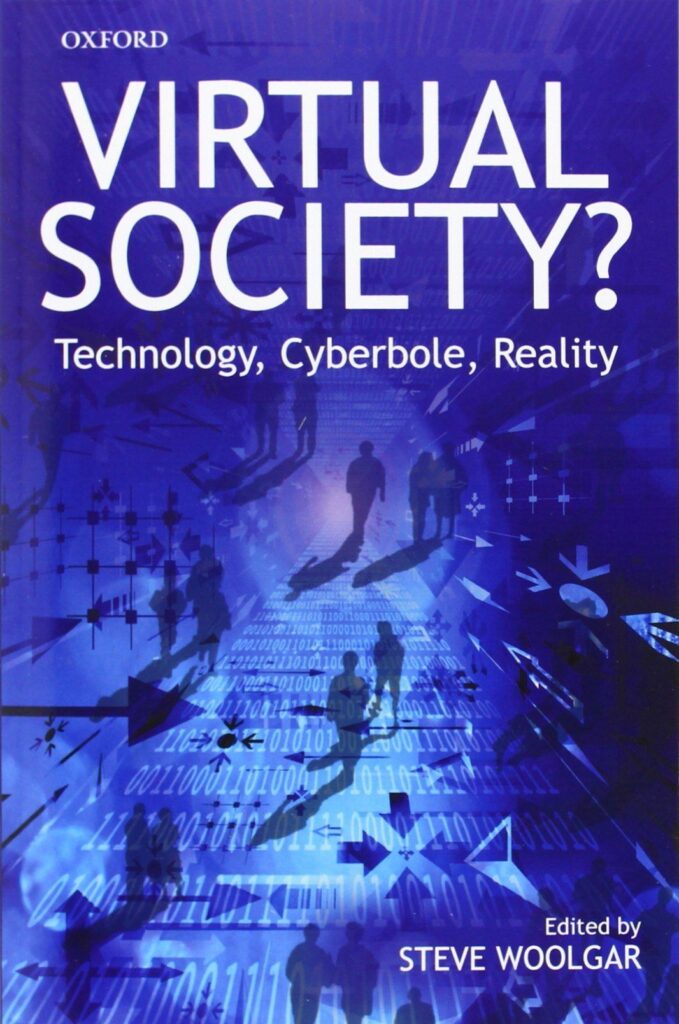The use of Internet communications has increasingly become part of our lives both at work and at home, for business and for recreation. Internet communications are augmenting and substituting for many of the interpersonal and group interactions that were previously conducted face-to-face. Surveys have repeatedly shown that electronic mail benefits business as a replacement for meetings (McKenna & Bargh, 2000), and evidence is also emerging that interpersonal communication is the dominant home use of the Internet. Ninety-four per cent of Internet users report that the Internet makes it easier for them to communicate with family and friends, and 87% use it regularly for that purpose (Kraut et al. 1998).

Susan Watt, Martin Lea, & Russell Spears (2002). How social is Internet communication? A reappraisal of bandwidth and anonymity effects. In Steve Woolgar (Ed.) Virtual Society? (pp.61-77). Oxford: Oxford University Press.
Interestingly, Crook and Light (this volume) have found that students with networked computers in their study bedrooms use the Internet far more for social communication and recreation than for study purposes or for academic exchange.The Internet is also vastly increasing the individual's field of eligible social contacts (Lea & Spears, 1995). Group interactions through newsgroups and chat-rooms are an increasingly important form of Internet communication. Indeed, the relative ease with which group interaction can take place on the Internet is emerging as one of the most important impacts of this new medium on contemporary social life.
This novel form of group communication can take a very real position in people's lives. For example, people with concealable stigmatized identities (e.g., being gay or holding unusual political beliefs) gain sufficient support from belonging to Internet groups that their self-acceptance increases, as does their likelihood of “coming out” or letting other people know about their hidden self (McKenna & Bargh, 1998). Internet communications also provide vital social support for people who are isolated through illness of other circumstances (Nettleton et al. this volume).
This pattern of behaviour portrays the Internet as a medium characterized by intense social activity. However, this image is in many respects belied by theoretical approaches to computer-mediated communication. These have tended to stress ways in which the medium is inadequate to support social interaction—or at the very least is sub-optimal in comparison with face-to-face interaction. Social psychological theories of new communication media from the telephone onwards have tended to downgrade or even deny the sociality of new media (Kiesler et al. 1984; Rutter, 1987; Short et al. 1976; Walther, 1992).
Susan Watt, Martin Lea, & Russell Spears (2002). How social is Internet communication? A reappraisal of bandwidth and anonymity effects. In Steve Woolgar (Ed.) Virtual Society? (pp.61-77). Oxford: Oxford University Press.
About this book
… intelligent, well-grounded and carefully drawn insights into the take up and use of ICTs … intriguing case studies … Throughout, Woolgar's book provides concrete sociological evidence to justify the question mark in the title. (European Journal of Communication)
This work shows social scientists seriously getting to grips with the complexitites of the social implications of electronic technologies. It should also be read widely beyond this community, stimulating dialogue with others working in the area, such as industry practitioners, government planners, and academics from other disciplines and societies. (Geoff Walsham, Professor of Management Studies, Judge Institute, University of Cambridge)
This stunning volume is obligatory reading for all those studying “cyberspace” and its contents and discontents. It is one of the first deep empirical studies of this scope analyzing the changes occasioned by the widespread development of networked information technologies. A subtle, intertwined scholarly effort, this book is a landmark achievement, marking the maturity of social studies of computing and IT. (Susan Leigh Star, Professor Of Communication, University of California at San Diego)
From Woolgar's “five rules of virtuality” to Pollner's delightful account of his adventures as a dot com investor, this challenging collection will be essential reading for all of those interested in the social relations of the new information technologies. (Donald MacKenzie, Professor of Sociology, Edinburgh University; Author of Inventing Accuracy)
This book shows the essential contribution of social sciences to the understanding of the network society, our society. Based on scholarly research, it provides a rigorous account of the diverse effects of information and communication technologies on the social fabric of our lives. It is a great antidote against mythologies and media hype on this critical subject matter. (Manuel Castells, Professor of Sociology, University of California at Berkeley)
Related Papers
Visibility and anonymity effects on attraction and group cohesiveness
Representations of the group and group processes in CSCW research: A case of premature closure?
Social presence in distributed group environments: The role of social identity
Social processes in electronic teamwork: The central issue of identity.

